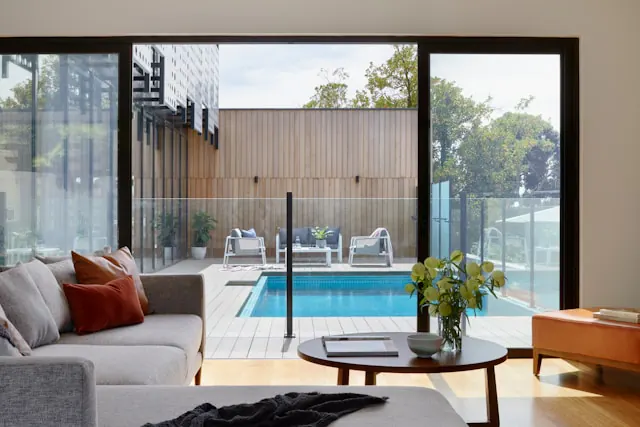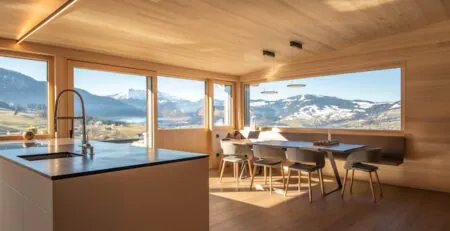A Beginner’s Guide to Choosing Boards for Interiors & Exteriors
Practicality and aesthetics Are taken into consideration while selecting the appropriate boards for both indoor and outdoor areas.
Boards can be used for a variety of tasks, such as structural support or design features. When choosing the right boards, it’s important to take durability, maintenance, and material into account.
We’ll go over the fundamentals of choosing boards for exteriors and interiors in this beginner’s guide, along with some useful information, data, and suggestions to assist you make judgments.
Interior Boards:
Interior boards are essential in determining the atmosphere and practicality of interior spaces.
These are a few typical kinds:
Drywall
Also referred to as plasterboard or gypsum board, drywall is a common material for interior walls and ceilings because it is inexpensive, and simple to install but lacks aesthetics. Additionally, Indowud NFC has introduced waterproof, termite-proof, and flame-retardant boards for dry walls up to a 25 mm thickness.
Plywood
Plywood is a material composed of thin, bonded wood veneer layers. It provides strength and stability and is used for wall paneling, furniture, and flooring. Its lack of termite resistance, waterproofness, flame retardancy, and smoke suppression is a drawback.
Medium Density Fiberboard (MDF)
Wood fibers are fused with resin under pressure and heat to create this manufactured wood product. Because of its even density and smooth surface, it is frequently used for decorative molding, cabinetry, and shelves. Nevertheless, compared to other panel products, it is weaker and more vulnerable to termites.
Particleboard
Constructed from wood particles bound together with resin, particleboard resembles MDF. While cheaper than plywood or MDF, it can not be as durable for cabinets and furniture.
Exterior Boards:
External boards need to protect structures from the elements and endure severe weather. Typical choices consist of:
Fiber Cement
Cement, sand, and cellulose fibers make up fiber cement boards. They are frequently used for siding and trimmings because of their minimal care requirements, durability, and resistance to decay and insects. But their lifetime is also uncertain, and their weight is a legitimate issue.
Wood Cladding
Wood cladding gives exteriors a warm, natural look. Popular options including cedar, redwood, and pine are not resistant to deterioration.
Vinyl Siding
For external cladding, vinyl siding is an affordable choice. Although it comes in a range of colors and patterns, is minimal maintenance, it might not have the same visual appeal as wood when compared to Indowud decks.
What must be taken into consideration?
A number of considerations should guide your choice of boards for the interior and exterior:
- Durability: Take into account how well the board resists moisture, temperature changes, and other external elements. Nowadays, however, termite and fire retardant features are also taken into account.
- Cost: To choose the most economical choice, weigh the initial cost of the boards against ongoing maintenance costs. The majority of consumers ignore this and simply keep purchasing inexpensive goods in the first sector, paying a hefty price in the long run.
- Aesthetics: Select boards that go well with your space’s architectural elements and design aesthetic. To fit the aesthetic, Indowud nfc boards and panel products can be painted, cladded, or stained.
FAQs on Interiors & Exteriors Boards
Is the durability of Indowud better than that of regular plywood?
Due to its composition and manufacturing method, Indowud is sometimes perceived as being stronger and more durable than standard plywood. Because of its increased resistance to moisture, termites, and the elements, it can be used in both indoor and outdoor settings where strength is essential. It can also be CNC routed and thermoformed.
Is the Indowud Waterproof?
When it comes to moisture resistance, Indowud outperforms plywood. This means that it can be used in places where exposure to moisture or humidity is an issue, including outdoors or in places where there is a lot of moisture, like bathrooms and kitchens. Indowud is a waterproof board.
Is Indowud a greener option?
Compared to plywood, indowud is undoubtedly more environmentally friendly. It may be made with materials that are renewable or sustainable and with manufacturing techniques that reduce its negative effects on the environment. To produce a material that is 100% recyclable, the production process and the materials utilized are closely inspected.
Why Indowud is consistent, calibrated, and possesses better quality?
Indowud provides panels of consistently higher quality than plywood. This indicates that the material is free of flaws, voids, or knots, giving a smoother, more uniform surface that is ideal for finishing or use in situations where aesthetics are crucial.
Fire Resistance is better in Indowud or other panel products?
Indowud is a smoke suppressant, V0 rated, and flame retardant. This parameter permits a safe escape from fire threats.
YouTube:
Quick Note from Indowud
In conclusion, selecting the appropriate boards for both internal and outdoor use necessitates giving material, durability, cost, and aesthetics serious thought.
You may make choices that improve the usability and aesthetic appeal of your spaces by being aware of the features of various board types and which ones are best suited for what kinds of applications.
In order to guarantee long-term satisfaction with your selected boards, keep in mind to give priority to quality, sustainability, and long-term performance. Choose Performance for life, choose Indowud.




Leave a Reply